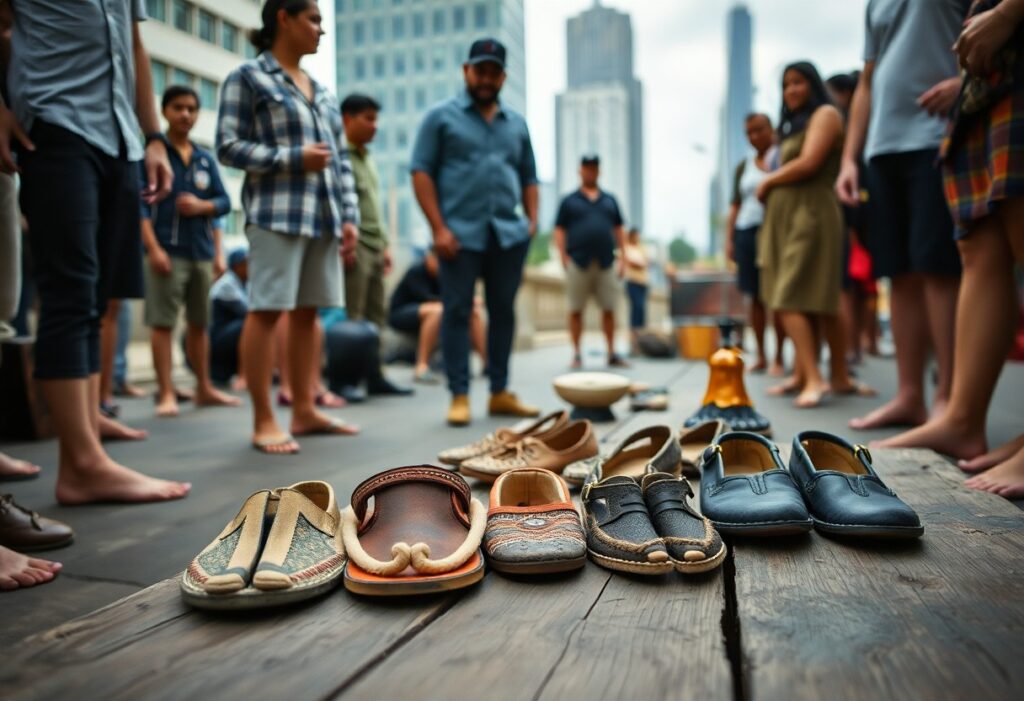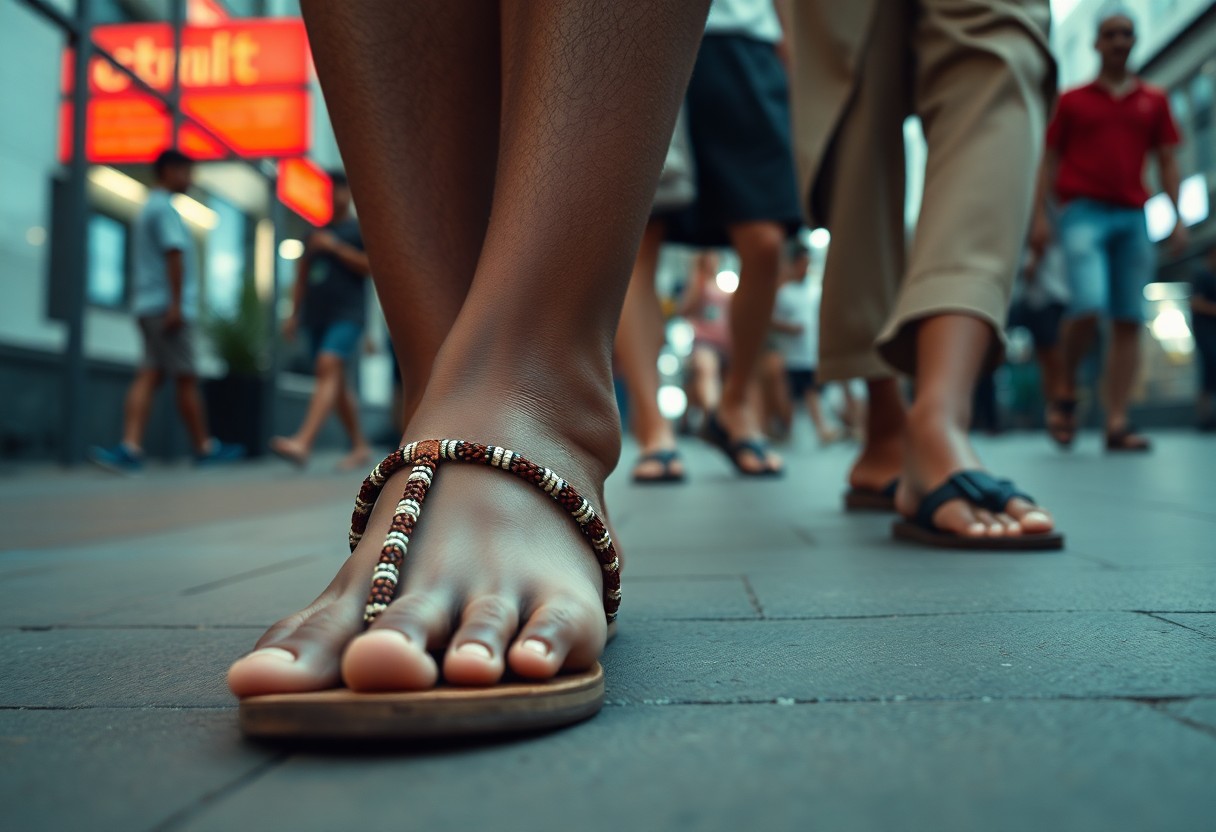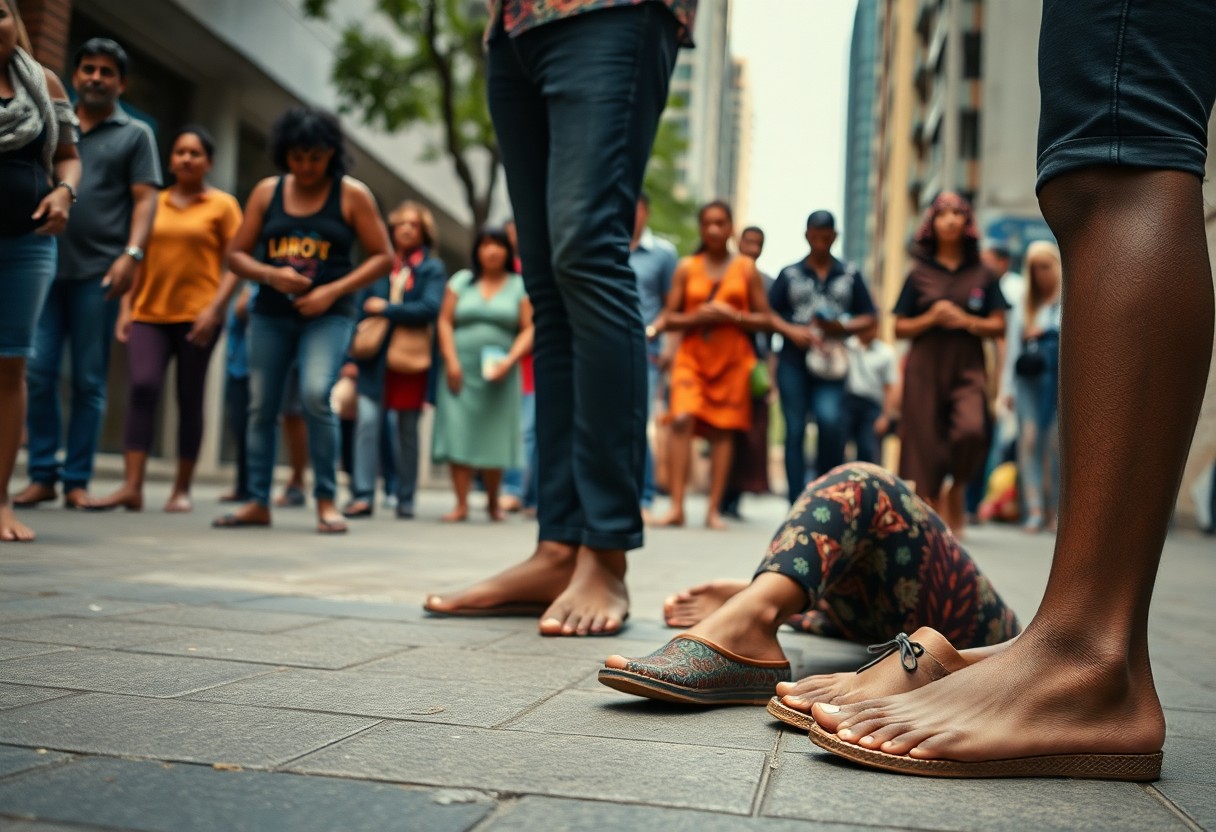
Delving into the fascinating world of <a href="https://myshoesfinder.com/barefoot-footwear-merging-user-searches-and-biomechanics/">barefoot footwear</a> through the lens of cultural anthropology unveils intriguing narratives that connect the time-honoured traditions of Aboriginal cultures to the hustle and bustle of modern urban life. As you embark on this enthralling journey, you will uncover how cultural beliefs and practices pertaining to minimalist footwear shape our perceptions of comfort, foster our connection to nature, and provide avenues for individual expression. Gaining insight into these themes not only deepens your understanding but also inspires a reconsideration of how your footwear choices can reflect significant cultural meanings and personal identity.

Connecting Historical Footwear Traditions with Contemporary Innovations
The modern footwear industry represents a vibrant tapestry that interlaces ancient traditions with innovative advancements, nurturing a growing appreciation for barefoot footwear. This progression not only pays tribute to traditional indigenous techniques but also seamlessly integrates them into your contemporary lifestyle. By acknowledging the importance of historical practices, you can discover an exciting amalgamation of cultural reverence and practical aesthetics in your daily footwear choices, thereby enhancing your personal style while honouring the legacies of the past.
Comparing Traditional Indigenous Foot Conditioning Practices with Modern Techniques
Throughout various global indigenous cultures, unique conditioning techniques have been utilised to fortify feet for diverse terrains. These practices, which often involve walking barefoot across varied surfaces, have notably enhanced the arches and muscles in ways that many modern interpretations frequently fail to replicate. While contemporary minimalist footwear may strive to emulate these effects, they rarely deliver the authentic experience of genuine contact with the earth, a crucial element for developing natural foot strength and flexibility. Engaging with these traditional methodologies offers a comprehensive understanding of foot health that modern designs often overlook, encouraging a broader appreciation for holistic well-being.
Exploring the Historical Progression of Military Footwear: From Ancient Caligae to Modern Tactical Boots
The saga of military footwear is a riveting narrative of adaptation and innovation, evolving from the robust Roman caligae, which were designed for durability and traction, to today’s tactical boots that expertly combine protection with agility and comfort. A detailed examination of these transitions reveals a consistent theme: in challenging environments, functionality reigns supreme, necessitating gear that enhances soldiers’ endurance and mobility.
The Roman caligae epitomised an advanced response to military requirements, crafted from resilient leather with an open-toe design for breathability. This ancient footwear featured thick soles that effectively absorbed shock and provided essential traction, crucial in combat scenarios. Fast forward to the present day, and tactical boots are now constructed using modern materials like Kevlar and waterproof membranes, significantly bolstering durability and performance. These contemporary designs incorporate padded collars and advanced cushioning systems to mitigate injuries during demanding military operations. Appreciating the legacy of military footwear illuminates how these historical styles have laid the foundation for present-day innovations, merging heritage, functionality, and cutting-edge technology to meet the evolving needs of today’s warriors.

Investigating the Cultural Divide in Footwear Choices: Urban vs. Rural Perspectives
The starkly contrasting footwear selections made in urban versus rural contexts reveal substantial cultural and practical differences. Urban landscapes often prioritise style and brand identity, while rural environments tend to focus on practicality and durability. As barefoot footwear gains popularity, urban inhabitants increasingly adopt its minimalist design as both a fashion statement and a pathway to perceived health benefits. In contrast, individuals residing in rural areas may remain reluctant to embrace such trends, influenced by traditional values and the practical necessities of their surroundings.
Uncovering Emerging Trends in the Urban Adoption of Barefoot Footwear
In urban settings, a distinct shift towards embracing barefoot footwear is unfolding, with adoption rates steadily increasing over the past decade. This trend is driven by various factors, including heightened health consciousness, a burgeoning interest in natural movement, and the influence of fitness trends such as yoga and running. Recent surveys indicate that approximately 35% of urban residents have actively sought out barefoot-style shoes, signifying a cultural shift towards embracing innovative body mechanics and enhancing overall well-being.
Examining Gender Dynamics in the Adoption of Barefoot Footwear: Who’s Leading the Charge?
Gender dynamics significantly influence the acceptance of barefoot footwear, as distinct motivations shape the choices of men and women. Women frequently encounter greater societal pressures concerning fashion and aesthetics, which can hinder their willingness to adopt minimalist styles. Conversely, men may be more driven by the performance and health benefits associated with these footwear options, resulting in higher adoption rates within the male demographic.
A closer examination of the gendered dimensions of barefoot footwear adoption reveals that societal expectations play a pivotal role in shaping women’s decisions. Women often navigate a landscape where ideals of beauty and fashion overshadow practical health advantages. Research indicates that approximately 45% of men in urban settings are inclined towards barefoot shoes, in contrast to only 30% of women. Female consumers frequently wrestle with balancing aesthetics and functionality, making them more cautious when evaluating the design of barefoot footwear against their desire for comfort and support. By empowering women through targeted awareness campaigns and showcasing fashionable barefoot options, the willingness to engage with this trend could increase, potentially reshaping urban footwear narratives and promoting inclusivity across genders.

Cutting-Edge Technologies Shaping the Future of Barefoot Footwear
As the demand for barefoot footwear continues to grow, pioneering technologies are set to transform your approach to comfort and performance. Advances in materials science and personalised fitting techniques will not only enhance functionality but also tailor your walking experience, merging traditional wisdom with contemporary design principles. We are entering an exciting era where your footwear becomes as unique as the journey it accompanies, resulting in improved comfort and performance.
Utilising 3D Scanning Technology for a Tailored Fit
The advent of 3D scanning technology is revolutionising how barefoot footwear is customised, enabling a precise fit that conforms to your unique foot shape. Rather than settling for standard sizes, your shoes can be intricately designed to align with the contours of your feet, significantly enhancing comfort while minimising the risk of injury. The availability of custom-fit options will not only elevate your walking experience but also make barefoot shoes accessible for individuals with diverse foot shapes and sizes.
Incorporating Smart Sensors: The Innovative Frontier in Footwear Technology
The integration of smart sensors into barefoot footwear is set to redefine the industry by embedding technology directly within the soles. These groundbreaking features can monitor various metrics, from distance travelled to foot pressure, providing you with invaluable insights to optimise your walking or running habits. Armed with real-time data, you can adjust your activities to enhance performance and safeguard your well-being.
Imagine having access to real-time analytics while you walk or run. Smart sensors can track your gait, alerting you to any irregularities that could lead to injury. Some forward-thinking brands are already developing footwear capable of analysing your foot's impact on different terrains, offering personalised recommendations for style or cushioning adjustments on the fly. This innovative integration merges smart technology with the traditional barefoot philosophy, ensuring you maintain a natural stride while leveraging the latest advancements in wearable tech. The potential to enhance sports performance, aid rehabilitation, and improve everyday comfort is boundless, fundamentally reshaping how you interact with your surroundings with every step.
Reflecting on the Journey of Barefoot Footwear
Your exploration of the cultural anthropology surrounding barefoot footwear unveils a rich narrative woven from the threads of Aboriginal traditions to modern urban practices. By embracing the principles of natural movement and a connection to the earth, you gain valuable insights into how this footwear philosophy transcends mere fashion, profoundly influencing lifestyle choices and community values. As you contemplate these diverse perspectives, consider how your footwear selections can embody and promote a deeper understanding of cultural heritage and adaptability in the contemporary world.
The Article Cultural Anthropology of Barefoot Footwear: From Aboriginal Traditions to Modern Urban Adoption appeared first on My Shoes Finder
The Article Cultural Anthropology of Barefoot Footwear: Traditions to Today Was Found On https://limitsofstrategy.com
The Article Cultural Anthropology of Barefoot Footwear Through the Ages found first on https://electroquench.com







